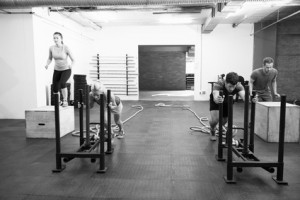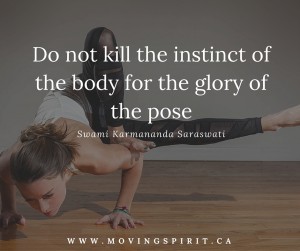 You know the story. It’s Sunday morning. The alarm goes off. It’s been a long week and you’re exhausted. You’re snuggled into bed, all warm and cosy under the sheets. Your body has that delicious, sleepy, heavy, “I’m staying right here” feeling. But you’ve set your goals and you know you have to hit the gym, do the long run/ride, or whatever the work is to get you to your goal. It takes discipline to get where you want to go. So before you accidentally doze off again and blow all your plans, you steel your resolve, throw back the covers, sit up and plant your feet on the ground. Time to roll.
You know the story. It’s Sunday morning. The alarm goes off. It’s been a long week and you’re exhausted. You’re snuggled into bed, all warm and cosy under the sheets. Your body has that delicious, sleepy, heavy, “I’m staying right here” feeling. But you’ve set your goals and you know you have to hit the gym, do the long run/ride, or whatever the work is to get you to your goal. It takes discipline to get where you want to go. So before you accidentally doze off again and blow all your plans, you steel your resolve, throw back the covers, sit up and plant your feet on the ground. Time to roll.
Once you’re up and around, it doesn’t feel so bad. You’re still tired, but you know how to push through that. And now, you’re up and out. As you begin your workout, it feels rough at first. (When doesn’t it?!) You’re a little stiff, maybe a little sore – because you haven’t completely recovered from the last workout. Your breath comes a little roughly. It just feels hard. But you know how to push through that. And if it’s worth doing, it’s worth doing well right? So you push. You don’t allow yourself a gentler pace. You don’t give yourself a break for the lack of sleep earlier in the week. You push yourself even harder to make up for your fatigue. You dig deep, bear down and just do it. And then you’re done. It was hard, but you got through it. There’s a huge sense of accomplishment in that. You did the work you needed to do to move toward your goals. And you keep doing it – day, after day, after day.
Just do it. Dig deep & go hard. Pain is weakness leaving the body. Sweat, pain, agony… LOVE IT! The sense of things seems to be that if you take your foot off the gas, even for a moment, that all your hard work will go out the window. If you don’t squeeze every last ounce of effort from every cell every minute of every workout, that you’re not working to your potential. And hey… maybe you’re right. But what if there were another path to success? What if you didn’t have to beat yourself up every single day to achieve those goals. What if it were possible to shift the quality of your effort to achieve a more sustainable, self-supportive path to your goals?
I’m not suggesting that you don’t pour your heart into your training. It is a cold, hard fact that the body requires stress to grow and change. You need to meet difficult challenges to move beyond them. So doesn’t that mean hard work? Yes! But how long do you think it is possible to sustain that relentless effort if you are throwing everything you have at a challenge all the time? If you are consistently bearing down and pushing through your training sessions, are you really doing good things for yourself? You tell yourself you just need more discipline, more will power. Maybe you’ll reach that one goal – but what will it cost you to get there? What next? What if there were a way to create a more sustainable journey toward your goals? Impossible? I don’t think so. But you have to tune in to your work in a whole new way.
What I am asking is that you begin to pay attention to the quality of your effort. Imagine yourself during a really challenging workout, where you’re pushing yourself and driving hard. What does that feel like in your body? Take a moment to really experience it – feel your muscles, your joints, your breath. What do you hear around you? Are you pushing through pain or injury? What’s going on in your mind? In your emotions? Imagine yourself after weeks and weeks of training this way. You’ve gained strength, your stamina may have improved… but how does it feel to LIVE in this body? Can you replace feelings of constriction, density, pain and push for more positive sensations?
 If you’re consistently tapping into the body’s sympathetic nervous system (the fight or flight responses in your body) to drive your way to glory, there will eventually be a physiological cost. If you are not able to find some degree of ease in your body during your workouts, your system will lose its ability to easily access the parasympathetic nervous system (the rest & digest responses) – making it harder to recruit slow twitch endurance muscle, making it harder to sleep, making it harder to access all of the restorative functions in your body. And if the restorative processes are not functioning well, eventually your body will have a hard time doing what it is you’re asking it to do. The result? Injury, fatigue, loss of motivation and diminishing results.
If you’re consistently tapping into the body’s sympathetic nervous system (the fight or flight responses in your body) to drive your way to glory, there will eventually be a physiological cost. If you are not able to find some degree of ease in your body during your workouts, your system will lose its ability to easily access the parasympathetic nervous system (the rest & digest responses) – making it harder to recruit slow twitch endurance muscle, making it harder to sleep, making it harder to access all of the restorative functions in your body. And if the restorative processes are not functioning well, eventually your body will have a hard time doing what it is you’re asking it to do. The result? Injury, fatigue, loss of motivation and diminishing results.
What’s the alternative? There’s no one answer for everyone. Each person’s approach to this will be as different as body types, hair colour and personality. Here, I offer you my experience, in the event that you can use it to feel better in your body – during your workouts and in the rest of your life!
1. I tune in to my breath. The breath is a great barometer for my level of effort. When I’m working hard, obviously my breath comes faster and harder. This I expect. What I watch for though, is whether my breath feels constricted, whether my chest, neck and shoulders begin to tighten up beyond the point where I can shake it off as I work. When this happens once it a while, it seems ok – I’ve challenged myself. But if it’s a chronic thing, I may be pushing into territory that will actually begin to affect my movement, and my level of fitness, in a negative way. My ego may want me to push harder to progress faster, but my body needs a little more time. I have to respect that.
2. I pay attention to how well-integrated my movement is. If I’m not able to sustain good form, or if finding good form becomes painful or overly challenging, I realize I have likely reached my “sustainability” limit, and I’m probably moving into compensations that are not conducive to great mobility in the long run. I have to decide – is this one moment worth it, or do I want to take a longer view to my own physical health? That decision may change depending on the activity. I just know that it’s a decision I’m making (consciously or not), and that I am the one who will have to deal with the consequences, good or bad.
3. I pay attention to my recovery. Typically, I prefer to move than not to move. I’m not a proponent of lying on the couch to recover. Recovery often requires as much thought and attention as the workout does. It actually starts before I workout. What does my body need today to have the best chance of moving through a particular activity well? Is it release work? Core integration? Active warm up? When I prepare well, my body performs better. After my activity, I ask the same questions – what does my body need to “re-set” after whatever challenge I’ve asked myself to meet? If the activity has a residual effect on my body – fatigue, delayed-onset muscle soreness etc – then what can I do to mitigate those responses? A bath? Ice? More sleep? A walk or a yoga class to lengthen out? A physio treatment? A massage? The way I have worked for most of my life, pain has been a part of the process – so much so, that I don’t often experience it as pain that would stop me from continuing. Now, I notice when I’m feeling “less than” – and make active choices about recovery, even as I continue to move.
4. I widen my focus.
If I’ve zeroed in on a goal, my focus will tend to narrow to see only that. In me, that intensity of focus tends to encourage a state of tension in my body. Tension masks sensation. When I begin to feel excessive tension or stress in my system as I work, I’ve learned to widen my perception to more than what is right in front of me. I open my focus to see and hear what’s happening around me. To feel the air around me, not just the breath in my lungs. In peripheralizing my perception of my experience, I can relate to the work I’m doing in a new way. Often, I begin to see the wider picture, and find new pathways to arriving where I want with more ease on the journey. There are times when the laser focus serves me well. But there are times when it gets in the way. If I can practice both – I can more easily flip between them and use what is most helpful in the moment.
5. I’m learning there is a time to say STOP.
I’m not training for a combat mission, where a life or death situation might demand that I keep going no matter what. The activities I do, the fitness programs I participate in; these things are to enrich my life with the joy of fully participating in what I want to do, when I want to do it. I don’t feel a need to be superhuman anymore. I just want to love living my life in my body. When my body gives me signals that it’s time to take a break – like fever, injury or even serious fatigue – I can take a break and not feel like a failure. Maybe it will take a little longer to reach whatever it was I was going for and maybe I won’t have a personal best time at something – but I continue to enjoy what I do if I’m not beating myself up about it. I’m learning to have compassion for my own body.
 Athletes are taught to be ruthless and relentless in the pursuit of their goals. Let’s bring some compassion for ourselves and our bodies back into the equation. It is possible to push for the best and still respect your body’s needs. In fact, I know it is the better choice in the long run. Make friends with the body you live in.
Athletes are taught to be ruthless and relentless in the pursuit of their goals. Let’s bring some compassion for ourselves and our bodies back into the equation. It is possible to push for the best and still respect your body’s needs. In fact, I know it is the better choice in the long run. Make friends with the body you live in.
“Do not fight your body. Do not carry the world on your shoulders like Atlas. Drop the heavy load of unnecessary baggage and you will feel better. Do not kill the instinct of the body for the glory of the pose. Do not look at your body like a stranger, but adopt a friendly approach toward it. Watch it, listen to it, observe its needs, its requests, and even have fun. Play with it as children do; sometimes it becomes very alert in swift. To be sensitive is to be alive.”
~ Swami Karmananda Saraswati
Have you found a peace with your body in movement, or do you fight with yourself? If you’ve found ways to move with compassion and self-support even in intense situations, please share your story in the comments below!
